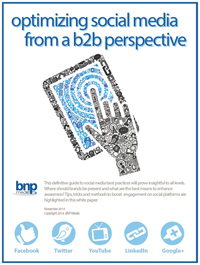A Win-Win Situation
By Andy Hanacek, executive editor
Properly structured equipment-leasing programs offer financial benefits to both processors and suppliers.
The dog-eat-dog world of business can be a tough place, even for the largest corporations. In the race to get ahead, the cost of doing business against the big guns in the meat- and poultry-processing industries can be just as difficult as in any industry. For many companies, the uphill climb claims many businesses before they even get a sniff of financial success, swallowed up by an inability to keep up with the frantic pace of technological advancement and necessary capital expenditures.
Many options exist for small processors to control costs, but some of those options can bring about negative aftereffects that threaten to sink the ship on that company. Yet, a viable financial option that crops up frequently in many other industries is equipment leasing. According to data from the Equipment Leasing and Finance Association (ELFA), eight in 10 companies in the U.S. lease some or all of their equipment. But in meat and poultry plants, the idea has yet to take full-scale hold, even though a properly structured equipment lease would help small processors to stay relevant and viable despite limited resources and would help equipment suppliers assist sales. Rick Carter, business development manager-food sector for Agricredit Acceptance, LLC, a company that uses a consultative approach to finance machinery and equipment for industry suppliers, manufacturers, distributors and equipment end users, says cash flow enhancements are the biggest benefits to leasing equipment.
“A true lease affords the ability to maximize the tax advantage of writing off the entire lease payment as an expense, versus depreciating the equipment with a loan,” he explains. “Furthermore, acquisition of equipment under a true lease does not impact the capital budget. The final decision to acquire the equipment might be easier when considering a $2,500 monthly payment as opposed to a $100,000 capital purchase.”
Carter adds that leasing equipment also allows processors to feature the latest technologies on their lines without breaking the bank or going too far into the red.
One processor using equipment leasing to propel itself toward success is Halperns’ Purveyors of Steak and Seafood, a fiercely independent meat and seafood specialty company in the Southeast, founded by Kirk Halpern, building off a 40-year family tradition in the business.
According to Laura A.F. Barnard, CFO of Halperns’, the company moved into a 110,000-square-foot facility in September of 2006. The new facility was equipped with state-of-the-art meat- and seafood-processing equipment, which had been secured because Howard Halpern, chairman of Halperns’, arranged capital and operating leases with a leasing and finance company in June 2005.
“These leases allowed the company to leverage external financing to invest in equipment to drive operational efficiencies while utilizing internal cash resources to support its unprecedented growth,” Barnard states. “Halperns’ will continue to utilize lease financing for future asset investments as an integral part of the company’s overall treasury strategy.”
One of the beauties of leasing equipment rather than owning it, according to the ELFA, is the flexibility that leases allow the customer, compared to loans and cash purchase. Most everything involved in the lease can be customized to address the processor’s requirements, from the term, transaction structure, payment plans and budget requirements. Ralph Petta, vice president of industry services for the ELFA, says that the term of the lease often depends on the speed of technological advancement within the industry the equipment serves.
“For instance, the depreciable economic life of a rail car is 30-35 years, but the depreciable life of a PC is three years, and you can lease both,” he explains. “At the end of three years, the PC is almost worthless, and a lot of companies are usually looking to upgrade. Whereas, after four years, a Boeing 737 is just getting started — that’s very early in its depreciable life.”
In the meat and poultry industries, the depreciable life of the equipment would also vary based on the speed of that particular technology’s advancement. Rugged, long-lasting equipment performing an established task with little process innovation would likely garner a longer-term lease, while equipment providing a cutting-edge, developing process would see a shorter term, giving processors the option to upgrade the equipment at the end of the term.
“Leasing can address the problem of technological obsolescence,” Carter explains. “Equipment with short technological lifespans can be replaced at the end of the term with up-to-date equipment. [Therefore,] it is important to structure the lease properly to match the expected lifespan.”
With the flexibility that leasing offers, however, that type of request shouldn’t be difficult to answer. Even lease payments typically can be varied according to seasonal fluctuations in revenue, something that rarely exists in traditional loan financing, which focus on level payments throughout the life of the loan. Payments also can be structured in a variety of ways to benefit both parties involved in the lease.
Although the processors most certainly gain flexibility and the ability to safely take on new, innovative processes that improve production, there is good news in leasing for equipment suppliers as well. Simply put, suppliers that offer lease and finance programs give processors one more reason to do business with them. Those processors might do more business with equipment manufacturers who offer more financing options, but the bottom line is, offering leasing and financing programs is a simple way to assist sales, stresses Carter.
“Leasing can be a valuable tool for the seller to increase sales,” he adds. “There is one constant — each and every sale involves financing, either internally with cash or through the use of external sources such as loans or leases. The key is to acquire the knowledge and expertise to utilize the proper form of finance that best fits the situation at hand.
“Cash is not always the cheapest form of financing equipment purchases.”
That said, a good supplier will offer multiple ways of buying their equipment, including loans, and good businesses will find the option that best suits them with the help of their finance company or division. Leasing equipment is not the right fit for every company in every situation. In some situations, such as the possibility of early payoff of the loan, leasing is not the viable option. Leasing should supplement the financial needs of a business looking for flexibility and improved cash flow.
For meat and poultry processors, leasing equipment often can help them keep up with the constantly changing technologies that hit the business without sinking buckets of cash into equipment that might become obsolete sooner than anticipated. With the right support, knowledge and setup, Carter says, leasing can be a win-win situation for all involved.
“There are no losers, only winners, utilizing properly structured lease or loan products.”
Benefits of leasing cited by state small business winners
In a 2006 survey of the Small Business Administration’s (SBA) U.S. State Small Business winners’ leasing activity, the Equipment Leasing and Finance Association (ELFA) found that increased cash flow was considered the top benefit to leasing equipment (Chart 1). Also, ELFA found that bank loans were considered most frequently by the winners in terms of equipment procurement (Chart 2), but in additional studies, 84 percent agreed that leasing equipment is a good business strategy for meeting the demands of small businesses.
10 questions to ask before signing a lease
As with any financial transaction, being fully informed and doing all the preparatory research on the parties involved and the terms is the key to a successful leasing relationship. Ralph Petta, vice president of industry services at the Equipment Leasing and Finance Association (ELFA), stresses that the customer leasing the equipment, “whether it’s a mom & pop dry-cleaning company down the road or it’s United Airlines, needs to read the document. They have to be able to understand what it is that the lease agreement stipulates for both parties.
“A commercial business should, no matter how big, read the document so as to avoid any misunderstandings at the end of the lease term,” Petta says. What follows are 10 questions that ELFA suggests customers ask before leasing equipment for their processing plants.
Before
1. How am I planning to use this equipment?
2. Does the leasing representative understand my business and how this transaction helps me to do business?
During
3. What is the total lease payment and are there any other costs that I could incur before the lease ends?
4. What happens if I want to change this lease or end the lease early?
5. How am I responsible if the equipment is damaged or destroyed?
6. What are my obligations for the equipment (such as insurance, taxes and maintenance) during the lease?
7. Can I upgrade the equipment or add equipment under this lease?
1. How am I planning to use this equipment?
2. Does the leasing representative understand my business and how this transaction helps me to do business?
During
3. What is the total lease payment and are there any other costs that I could incur before the lease ends?
4. What happens if I want to change this lease or end the lease early?
5. How am I responsible if the equipment is damaged or destroyed?
6. What are my obligations for the equipment (such as insurance, taxes and maintenance) during the lease?
7. Can I upgrade the equipment or add equipment under this lease?
After
8. What are my options at the end of the lease?
9. What are the procedures I must follow if I choose to return the equipment?
10. Are there any extra costs at the end of the lease?
Source: www.ChooseLeasing.org
8. What are my options at the end of the lease?
9. What are the procedures I must follow if I choose to return the equipment?
10. Are there any extra costs at the end of the lease?
Source: www.ChooseLeasing.org






